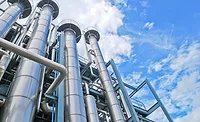The Coming China Crisis: Fact or Fiction?

Over the last few months, almost every major publication has done a story on the possibility of an economic and/or financial collapse in China and the probable impact on the global economy. It's not hard to understand why. As the fourth-largest trading region in the world (behind the United States, Europe and Japan), the second largest importer of oil (behind the United States), the largest destination for foreign-direct investment, and the largest consumer of products such as steel, coal, and cement in the world, China is no longer an interesting side story to the global economy - it is one of the global economy's major growth engines. Yet this engine is not without issues, including a banking system so out of control that despite an enormous bad debt problem (maybe 40% of all loans outstanding), the government recently had to resort to strong-arm tactics to stop banks from loaning even more money to already over-invested sectors. Specifically, the government made it temporarily illegal to lend to any new projects in the steel, cement or property industries.
Whether you are already invested in China, thinking of investing in China, competing with China or just wondering if you'll have a job in six months, the possibility of an economic meltdown in China should probably be on your radar screen. The $164,000 question is: Just how real is the possibility of a crisis in China?
The irony is that while some predict crisis in China sparked by a banking collapse that would surely lead to a devaluation of the currency as incoming investment dries up and domestic savings flees in search of security, others are calling for a revaluation of the currency to restrain China's overzealous export growth that is supposedly wreaking such havoc in labor markets overseas. With so much noise centered on the possibility of both a Chinese currency revaluation and devaluation, could it be that the likely outcome is in the middle? That's what I'm betting on. Let's look at the pros and cons.
The Bad News
The bad news is that China really does have a screwed-up banking system. Most loans are made by the "big four" Chinese state-owned banks. As government institutions, these banks operate with the same sense of fiscal responsibility as Congress and the same efficiency as the Department of Motor Vehicles. In a free-market economy, banks make loans based on their own credit risk and reserve requirements imposed by regulators. In China, banks make loans for other reasons. Some loans are designed to prop up failing state-owned enterprises (SOEs), which essentially means that Chinese banks distribute welfare funds for the state.Other lending in China is driven by an "if you build it they will come" approach to economics, which assumes that money invested will eventually lead to money made without much regard for details like actual supply, demand and capacity in any particular field. In other words, every village, town and province wants to build its own steel mill using OPM (other people's money) from the state, which results in massive over-investment that leads to massive oversupply and a whole bunch of failing companies that can't repay their loans. (By the way, it doesn't help that the best way to get one of these loans is to be a cousin of the mayor and a friend of the president of the local branch of a major bank, and to be so generous as to be willing to share the wealth with your family and friends. Unfortunately, I have no such cousins.)
The Good News
The good news is that China's screwed-up banking system isn't really a banking system at all. China's major banks are really government agencies, and their bad loans are more appropriately viewed as government deficits. Think of social security in the United States - it's supposed to be a "trust fund," but we all know that idea died with FDR. The American social security "trust fund" is in a state of perpetual bankruptcy that will only get worse as baby boomers retire. The only way to make good on the promise of social security is to continue to grow the economy in order to be able to pay into the system, and even then it won't work unless we adjust benefits downward to account for the increasing ratio of old to young.Chinese banks are in a similar situation. Their solvency depends on a growing economy coupled with continued economic and financial reform in China, including decreasing subsidies for failing state-owned enterprises and increasing fiduciary discipline and economic realism with regard to credit decisions. The former is underway and ongoing. The support system for China's SOEs is being whittled away, and SOEs are increasingly being forced to sink or swim. The latter - reform of the banking system to introduce real market forces - is behind schedule and in need of a shot in the arm. But that's not all bad. Because the government still heavily controls China's banks, it can reach out, as it recently did, grab the banks by the neck and force them to behave, at least for a while. In the long run, real reform must occur to root out corruption, drastically reduce OPM-related over-investment, and put China's financial system on the solid footing it needs to sustain growth.
All for One
Although World Trade Organization-mandated regulatory changes that would allow foreign banks into China are behind schedule, such changes are moving forward, along with other modifications necessary to make China's banks behave more like real banks. The question is whether such changes will phase in quickly enough to avert impending doom. The numbers suggest there is still time. With relatively low external debt and extremely high foreign exchange reserves ($400 billion), China's internally generated $500 billion in bad loans (really government debt) is not so bad as to suggest immediate crisis. For this reason, while it is possible China will retreat from its recent 8-10% annual growth rate, I for one am not banking on a Chinese collapse.By the way, for those who think a Chinese financial collapse would be a good thing for America, think again. A lower Chinese currency would only add fuel to the fire of the Chinese export engine - i.e., Chinese competitiveness would increase, not decrease. Additionally, many major multinationals already derive substantial profit from China. Less profit in China means less investment and employment everywhere. The largest impact would be on Chinese imports, which, believe it or not, have been increasing at 40% per year and are our best bet to reduce our trade imbalance with China.
Make no mistake about it: A healthy Chinese economy is good for America, and vice versa. That's the beauty of the world economy. We all work together - one for all and all for one. It sure beats the heck out of what's going on in other parts of the world.
Dan Joseph is a managing director at ESS China, a firm that specializes in helping American companies adjust to the challenges and seize the opportunities of globalization with a particular emphasis on China. ESS's activities include sourcing (helping U.S. companies stay competitive by keeping costs down), manufacturing and operations capability services (helping U.S. companies establish a presence in China), and investing in business opportunities in China (e.g. contract manufacturing, partnering with U.S. firms getting involved with China, acquiring companies that are dealing with global challenges, etc.). Joseph is also the author of Wen and the Art of Doing Business in China, a humerous and instructive book about his experience managing businesses in China. He can be reached at djoseph@esschina.com.
Looking for a reprint of this article?
From high-res PDFs to custom plaques, order your copy today!




